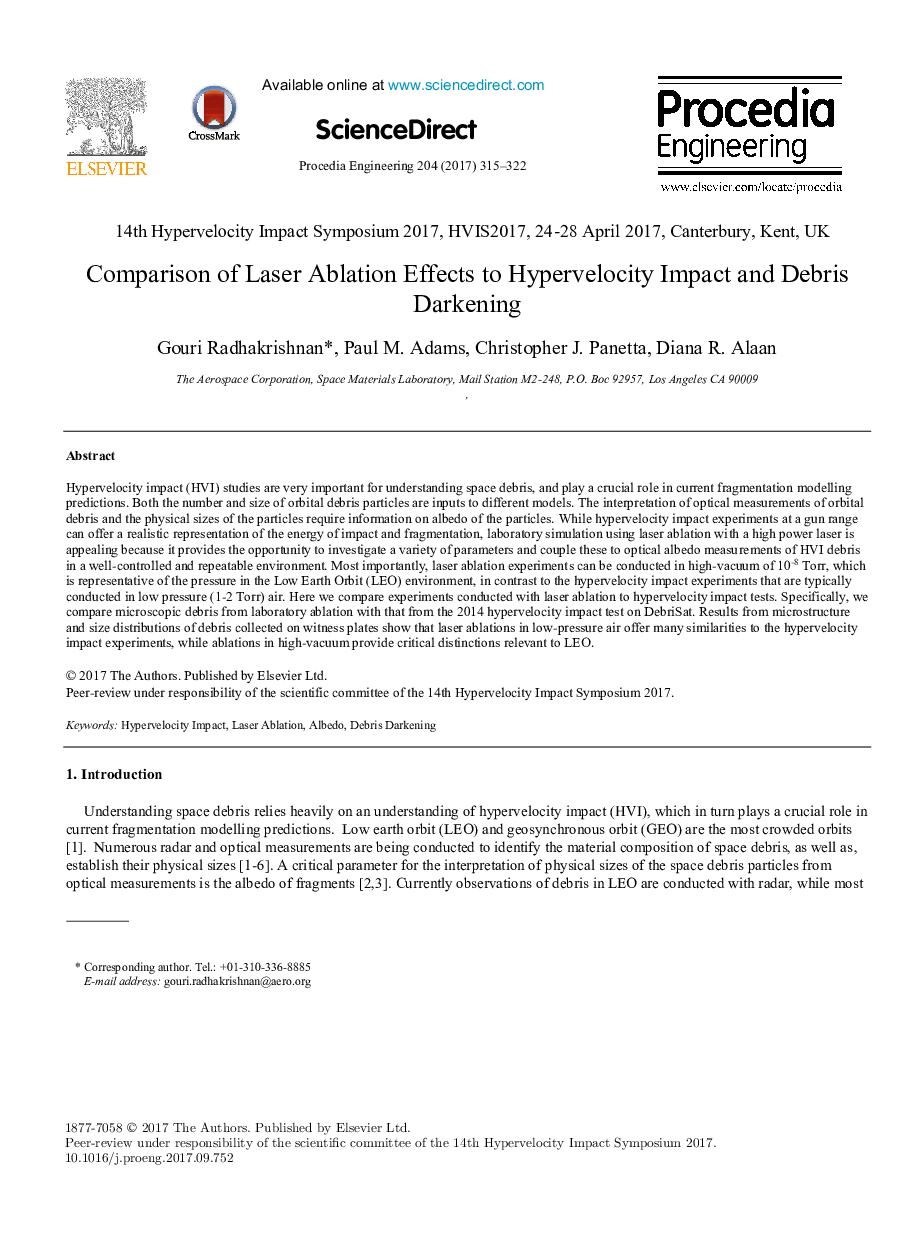| کد مقاله | کد نشریه | سال انتشار | مقاله انگلیسی | نسخه تمام متن |
|---|---|---|---|---|
| 7227961 | 1470622 | 2017 | 8 صفحه PDF | دانلود رایگان |
عنوان انگلیسی مقاله ISI
Comparison of Laser Ablation Effects to Hypervelocity Impact and Debris Darkening
ترجمه فارسی عنوان
مقایسه تأثیر لغزش لیزر به تاثیر هیپرولوسیت و تیره شدن حشرات
دانلود مقاله + سفارش ترجمه
دانلود مقاله ISI انگلیسی
رایگان برای ایرانیان
کلمات کلیدی
موضوعات مرتبط
مهندسی و علوم پایه
سایر رشته های مهندسی
مهندسی (عمومی)
چکیده انگلیسی
Hypervelocity impact (HVI) studies are very important for understanding space debris, and play a crucial role in current fragmentation modelling predictions. Both the number and size of orbital debris particles are inputs to different models. The interpretation of optical measurements of orbital debris and the physical sizes of the particles require information on albedo of the particles. While hypervelocity impact experiments at a gun range can offer a realistic representation of the energy of impact and fragmentation, laboratory simulation using laser ablation with a high power laser is appealing because it provides the opportunity to investigate a variety of parameters and couple these to optical albedo measurements of HVI debris in a well-controlled and repeatable environment. Most importantly, laser ablation experiments can be conducted in high-vacuum of 10-8 Torr, which is representative of the pressure in the Low Earth Orbit (LEO) environment, in contrast to the hypervelocity impact experiments that are typically conducted in low pressure (1-2 Torr) air. Here we compare experiments conducted with laser ablation to hypervelocity impact tests. Specifically, we compare microscopic debris from laboratory ablation with that from the 2014 hypervelocity impact test on DebriSat. Results from microstructure and size distributions of debris collected on witness plates show that laser ablations in low-pressure air offer many similarities to the hypervelocity impact experiments, while ablations in high-vacuum provide critical distinctions relevant to LEO.
ناشر
Database: Elsevier - ScienceDirect (ساینس دایرکت)
Journal: Procedia Engineering - Volume 204, 2017, Pages 315-322
Journal: Procedia Engineering - Volume 204, 2017, Pages 315-322
نویسندگان
Gouri Radhakrishnan, Paul M. Adams, Christopher J. Panetta, Diana R. Alaan,
